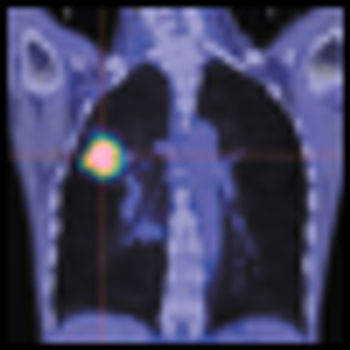
Th e cancer survivor population in the U.S. is nearing 14 million and is growing at a rate of about 10% each year. Unfortunately, cancer patients who have completed treatment do not always have access to comprehensive, follow-up care.

Your AI-Trained Oncology Knowledge Connection!


Th e cancer survivor population in the U.S. is nearing 14 million and is growing at a rate of about 10% each year. Unfortunately, cancer patients who have completed treatment do not always have access to comprehensive, follow-up care.

ONCOLOGY Nurse Edition Continuing Medical Education July 2010

ASTRO selects its 2010 class of fellows while ASCO bestows awards on international oncologists. Learn more about the latest appointments and accolades in the cancer community.

Research has proven that invertebrates are immune to malignant disease. We are on the cusp of discovering how their immunopotent systems can serve as anticancer agents.

SNM president challenges insurers to focus more on saving lives and less on saving money.


It is well known that exposure to chemotherapy or radiation therapy can result in long-term complications for childhood cancer survivors. What is less certain is why some children have to contend with these complications while others do not. Researchers at the City of Hope Medical Center in Duarte, Calif., are one step closer to fitting another piece in the survivorship puzzle: They hypothesized that there is some inherent genetic susceptibility that raises this risk.

HIV’s disruption of immune system function may cause the immune system cells themselves to become cancerous, NCI researchers have concluded. If so, this might explain why patients with AIDS are 100 times more likely to be diagnosed with non-Hodgkin’s lymphoma than the general population.

The Obama administration is pushing for universal EMR adoption. Sounds like a good idea. But are EMRs ready for prime time?

Energy therapies consist of interventions that are designed to interact with the biofield of a person. The concept of the biofield is based on the assumption that all living things have a natural flow of energy that is integral to their basic composition.

Epigenetic cancer therapies that changed how DNA is packaged within the nucleus clearly work against some tumors, but it's not clear exactly how. A new study has unearthed a hitherto unknown action: They seem to unmask tumor antigens to make them vulnerable to attack by cytotoxic lymphocytes.

In our experience, EMRs are not working, and we need a different solution. Fast. Here are just three of the problems. In our opinion, Medicare needs to stop the train at the station until some other important issues are addressed that enable EMR to be effective.

Nighthawk remains poised for growth despite a recent announcement that it is closing some offices and cutting jobs, according to a financial analyst who follows the company.

Watch this page for ONCOLOGY’s on-site coverage of the annual meeting: Internationally regarded oncologists give exclusive interviews and expert perspective reports of the highlights of this year’s meeting. See the links below for ASCO Renal Cell Carcinoma session coverage from RCC experts Andrew J. Armstrong, MD, MSc, Duke Comprehensive Cancer Center, and Robert J. Motzer, MD, MSKK

Visit ONCOLOGY’s on-site coverage of the annual meeting: Internationally regarded oncologists gave exclusive interviews and expert perspective reports on the highlights of this year’s meeting. See the links below for Hematologic Cancers session coverage from hematologic malignancy authority Samuel M. Silver, MD, PhD, University of Michigan

The NP working in your practice may have knowledge gaps of which you are unaware. At the moment, you're responsible for solving the problem.

For more American Society of Clinical Oncology coverage from CancerNetwork, please visit our pages Renal Cell Carcinoma (with experts Andrew J Armstrong, MD, MSC, Duke Comprehensive Cancer Center, and Robert J. Motzer, MD, MSKK) and Hematalogic Cancers (coming soon with insights from Samuel M. Silver, MD, PhD, University of Michigan).

Watch this page for ONCOLOGY’s on-site coverage of the annual meeting: Internationally regarded oncologists give exclusive interviews and expert perspective reports of the highlights of this year’s meeting. See the links below for American Society of Clinical Oncology GI Cancer session cover from GI cancer specialists Richard M. Goldberg, MD, Lineberger Comprehensive Cancer Center and Peter C. Enzinger, MD, Dana-Farber Cancer Institute

Watch this page for ONCOLOGY’s on-site coverage of the annual meeting: Internationally regarded oncologists give exclusive interviews and expert perspective reports of the highlights of this year’s meeting.

Harold E. Varmus, MD, has been nominated by President Barack Obama to serve as the director of the NCI.

The Taussig Cancer Institute at the Cleveland Clinic has been awarded more than $2 million from the American Recovery and Reinvestment Act for the renovation and expansion of its translational cancer research facilities. The National Center for Research Resources, which is part of NIH, awarded the grant.

On the heels of a lawsuit filed by multiple medical associations, the Federal Trade Commission has delayed enforcement of the Red Flags Rule through December 31, 2010, while lawmakers consider legislation that would affect the scope of entities covered by the rule.

Lung cancer is not a discriminate disease, but the disease burden is especially high on African Americans in the U.S. The statistics are stark: African-American men are 37% more likely to develop lung cancer than white men and are 22% more likely to die of it. In addition, only 12% of African Americans live longer than five years after a diagnosis of lung cancer, compared with 16% of whites, according to a recent report by the American Lung Association.

Multiple scans are now par for the course in cancer care. Experts debate whether all are essential to patient management or some should be cut to help rein in surging costs.

International physicians garner awards from ASCO while several U.S. institutions appoint new leaders. Read more about the latest appointments and accolades in the cancer community.

As genome-wide association studies (GWAS) have opened the door to systematic discovery of genetic factors for complex diseases, including cancers, the clinical utility of the findings remains to be determined. This is elegantly discussed in the article in this issue of ONCOLOGY by Stadler et al. The authors rightfully caution against the use of “personal genomic tests” based on cancer GWAS results for personal cancer risk prediction.

Genome-wide association studies (GWAS) have emerged as a new approach for investigating the genetic basis of complex diseases. In oncology, genome-wide studies of nearly all common malignancies have been performed and more than 100 genetic variants associated with increased risks have been identified. GWAS approaches are powerful research tools that are revealing novel pathways important in carcinogenesis and promise to further enhance our understanding of the basis of inherited cancer susceptibility. However, “personal genomic tests” based on cancer GWAS results that are currently being offered by for-profit commercial companies for cancer risk prediction have unproven clinical utility and may risk false conveyance of reassurance or alarm.

Breast cancer is predominantly a disease of older women. Many of these older patients with breast cancer have low-risk disease owing to low proliferation indices, positive hormone receptors, node-negativity, or p53-negative and HER-2 (human epidermal growth factor 2)-negative tumors.[1,2] They do well without chemotherapy and will receive adjuvant hormonal therapy with tamoxifen or an aromatase inhibitor. Yet there are older women who do not have these favorable tumor characteristics and so are potential candidates for chemotherapy. The review by Muss points out this issue, highlighting benefits of chemotherapy and describing appropriate treatment regimens for these patients.

Although increasing age is the major risk factor for breast cancer incidence and mortality, when adjusted for disease stage, breast cancer mortality is similar among younger vs older patients. Importantly, about 90% of older women with breast cancer present with early-stage disease. The biologic characteristics of breast tumors in older patients suggest they would derive benefit from adjuvant therapy, particularly endocrine therapy, but older women are still frequently undertreated, resulting in poorer survival. Studies suggest that focusing on comorbidity rather than “chronologic age” as a surrogate for life-expectancy is a key aspect of adjuvant decision-making for older patients. Morbidity and mortality from cancer in vulnerable patients with poorer health can be accurately predicted by the Comprehensive Geriatric Assessment (CGA), which evaluates comorbidities, functional status, cognition, social support, psychological state, nutritional status, and polypharmacy. Use of the CGA and newer versions of this tool can lead to interventions that maintain function and improve quality of life in older patients with breast cancer.

Vitamin E is a fat-soluble vitamin found in green leafy vegetables, whole grains, nuts and seeds, wheat germ, eggs, and in oils derived from soybeans, almonds, safflower, and sunflower. It is also an antioxidant and is said to confer protection against Alzheimer’s, Parkinson’s, cardiovascular disease, arthritis, and cancer. Although observational data suggest a correlation between high intake of foods rich in vitamin E and lowered risk of cancer, randomized trials using vitamin E supplements failed to validate those findings; some studies suggest that vitamin E supplementation can actually increase all-cause mortality.